West-Meets-East
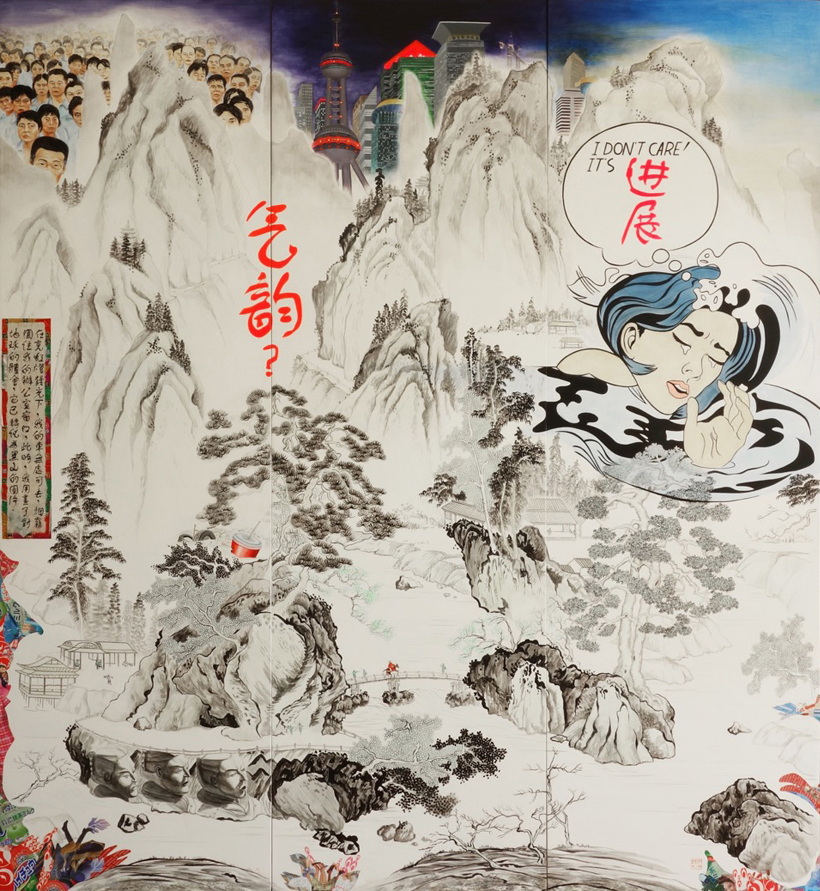
I Don’t Care, It’s Progress, acrylic, oil and paper on board, 54 x 60”, 2009
Modern factory workers and skyscrapers peer from behind mountains. Collaged images of contemporary commercial life encroach at the bottom, and a garbage dump occupies the center. This is about the lightning fast modernization of China – and by implication the industrialization of all countries – and what is lost in the process. Translation of the two characters with the question mark is, “Balance?” The appropriated image from Roy Lichtenstein represents the forces pushing for industrialization, even with its multiple costs. It’s Progress! The poem is a variation on the original by the Qing artist Bada Shanren. It translates:
Neon lights shine, my car has nowhere to go,
Smog swirls around my office in the clouds,
At this time, I exhaust my view of the earth,
It is already the picture of Black Mountain.
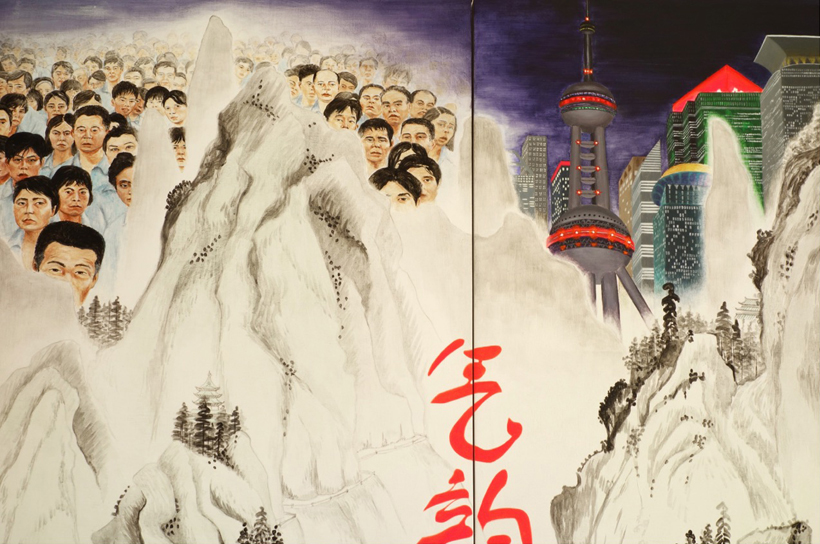
Detail: I Don’t Care, It’s Progress
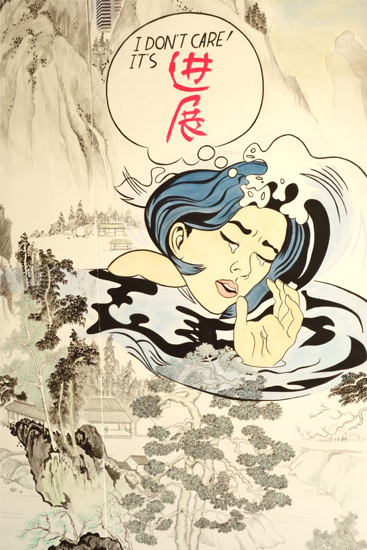
Detail: I Don’t Care, It’s Progress
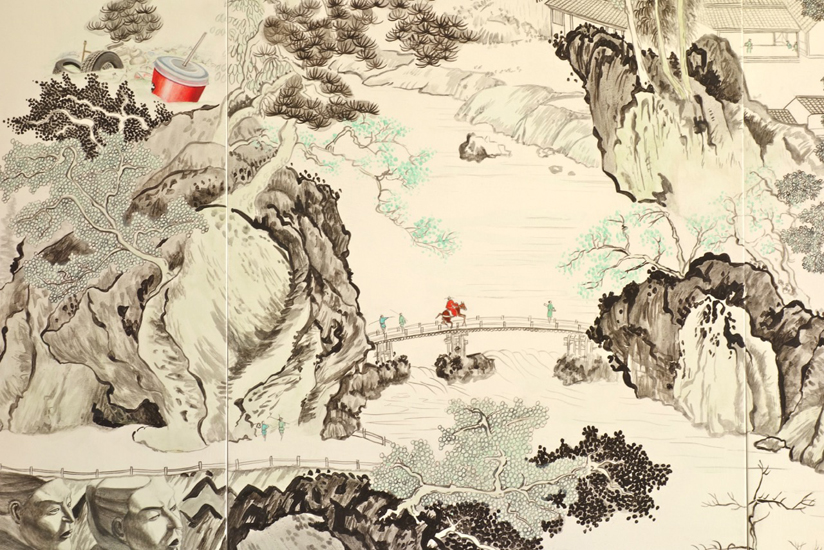
Detail: I Don’t Care, It’s Progress
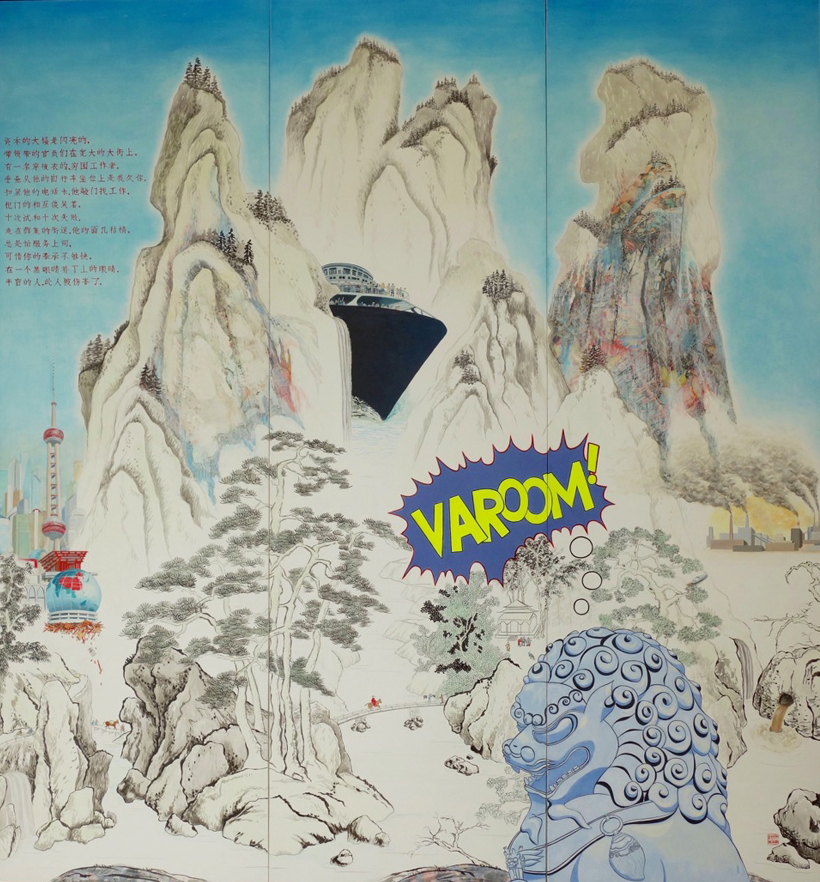
Varoom!, acrylic, oil and paper on board, 54 x 60”, 2010
This is about the damage encroaching modernization can do to a country, in this case China. A modern Shanghai building crushes a traditional temple, while factories spew poison. A tourist boat crashes through the landscape, while a Pop style lion sculpture gleefully shouts, “Varoom!” The collaged part of the mountain on the right is composed from images of cheap toys and mass-produced junk. The poem is a bastardization of “The Capitol” by Yuan Hongdao. It translates:
Bright are the skyscrapers of the capitol,
Neck tied officials compute above broad streets.
There is a ragged, destitute worker:
Hanging from his scooter’s saddle, sheaves of IOUs.
Clasping his calling card, he knocks on doors for work:
The door guards smirk at one another
Ten try and ten fail,
Walk the teeming streets, his face is haggard.
Always fear in serving the bosses:
Sorry your flattery isn’t quick enough.
Over an eye, a black eye patch:
Half blind, the fellow is injured.
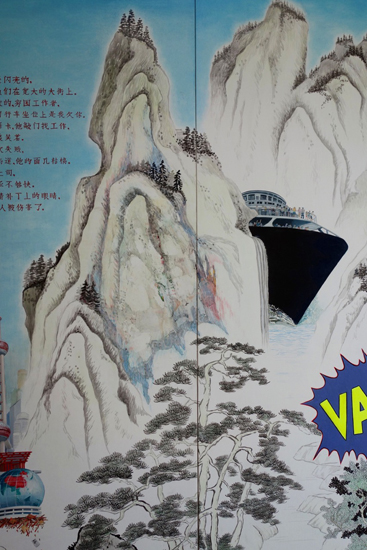
Detail: Varoom!
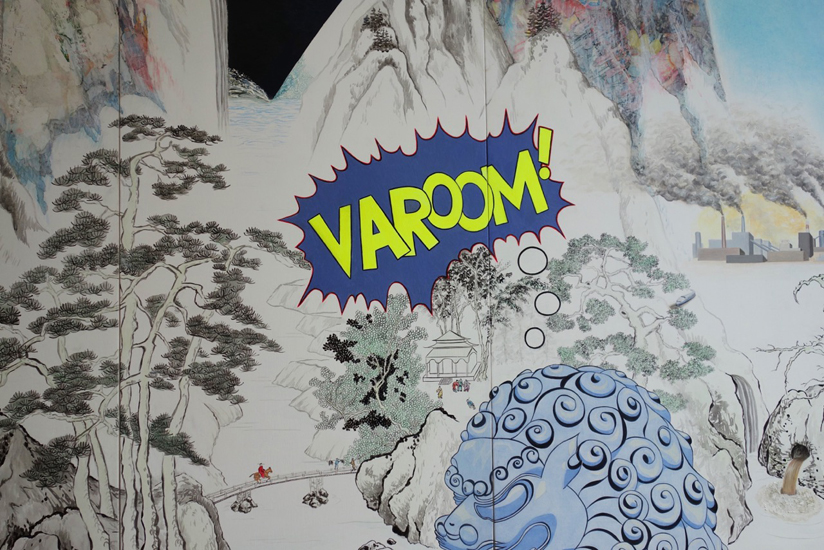
Detail: Varoom!
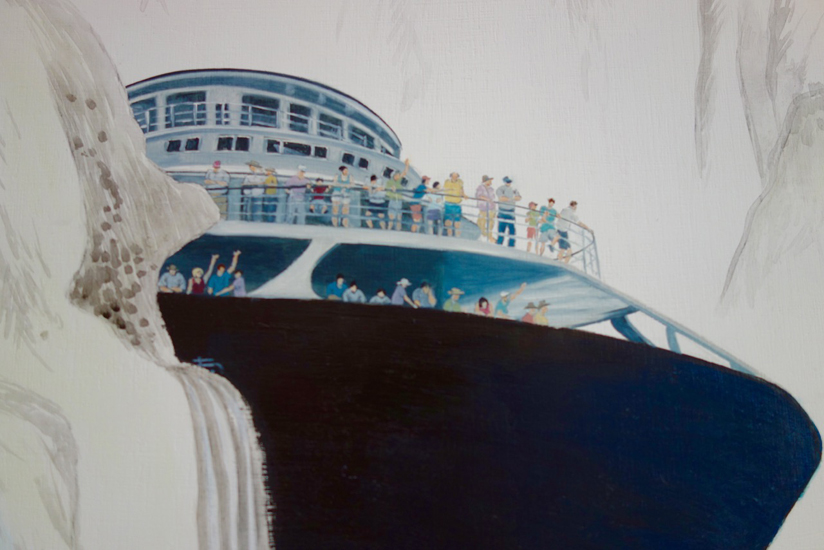
Detail: Varoom!
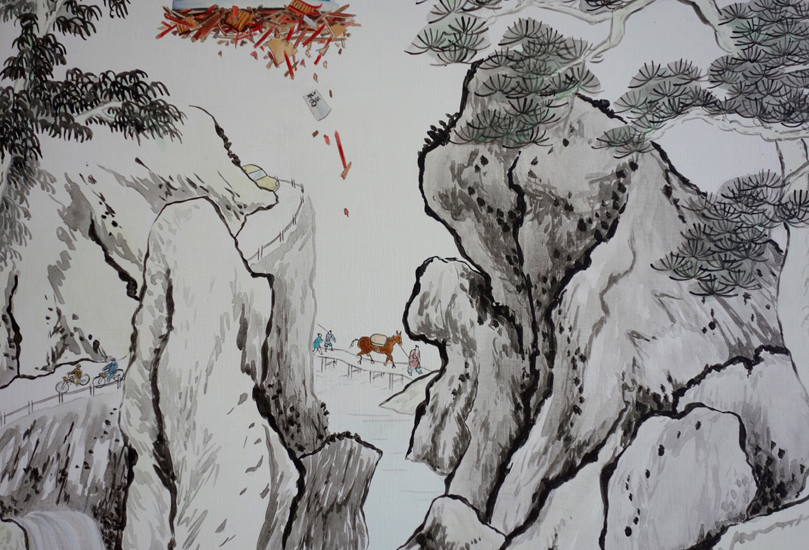
Detail: Varoom!
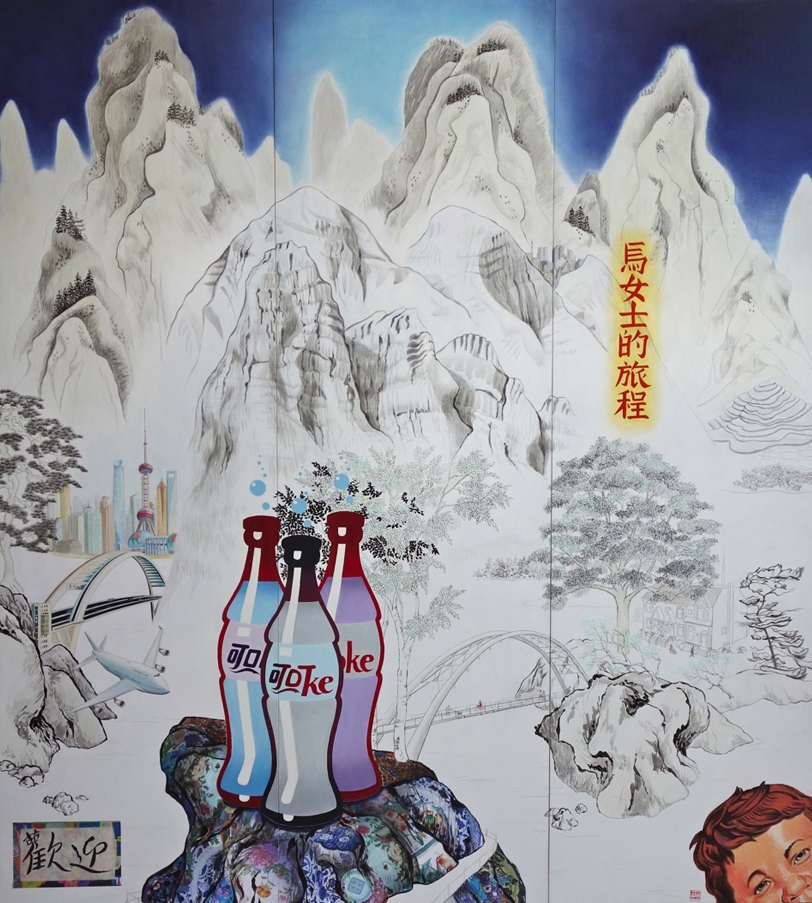
Mrs. Ma’s Journey, acrylic, oil and paper on board, 54 x 60”, 2011
This is the story of Mrs. Ma’s journey from a small Chinese community (middle, right panel), to a mid sized city (upper border between right and middle panels), to Shanghai (mid left panel), and finally flying to Canada and over the Humber Bridge to Toronto. The different mountains and trees, characteristic of the two countries, reflect the huge changes in her life as she immigrates. The island, collaged from images of traditional Chinese ceramics, represents the old world she is leaving. The lettering on the Coke bottles standing on the island transitions from Chinese to English, symbolizing the change in Mrs. Ma’s world. The phrase, ”It’s a mad, mad world” is associated with Alfred E. Newman, who peeks up from the lower corner.
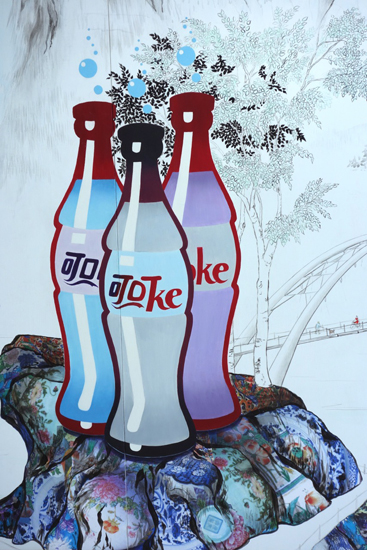
Detail: Mrs. Ma’s Journey
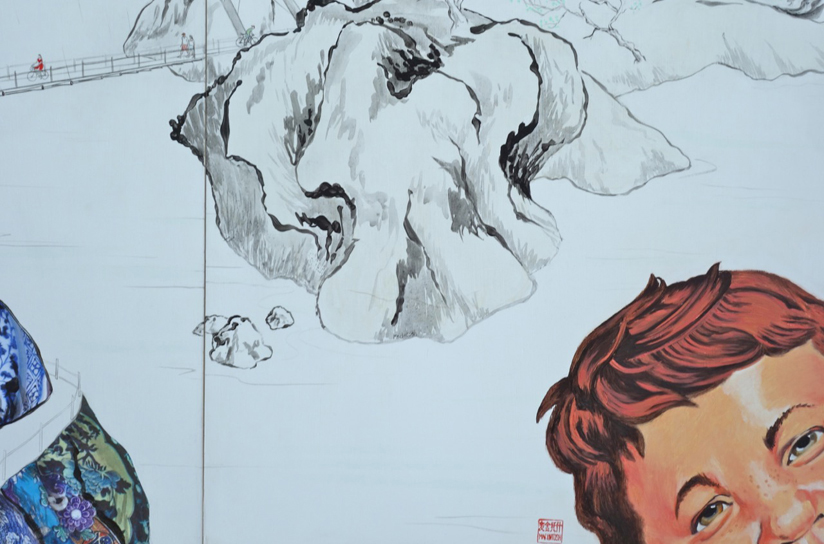
Detail: Mrs. Ma’s Journey
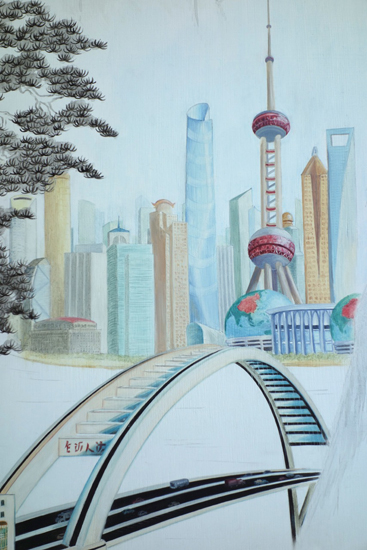
Detail: Mrs. Ma’s Journey
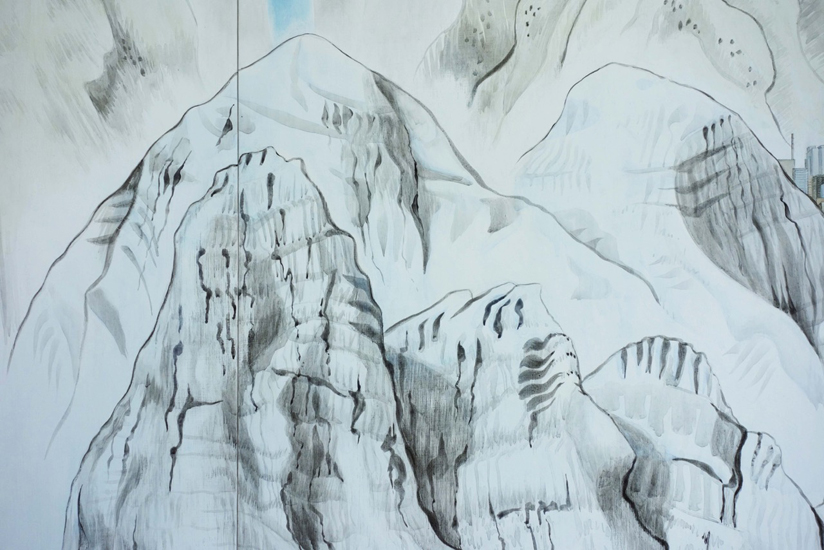
Detail: Mrs. Ma’s Journey
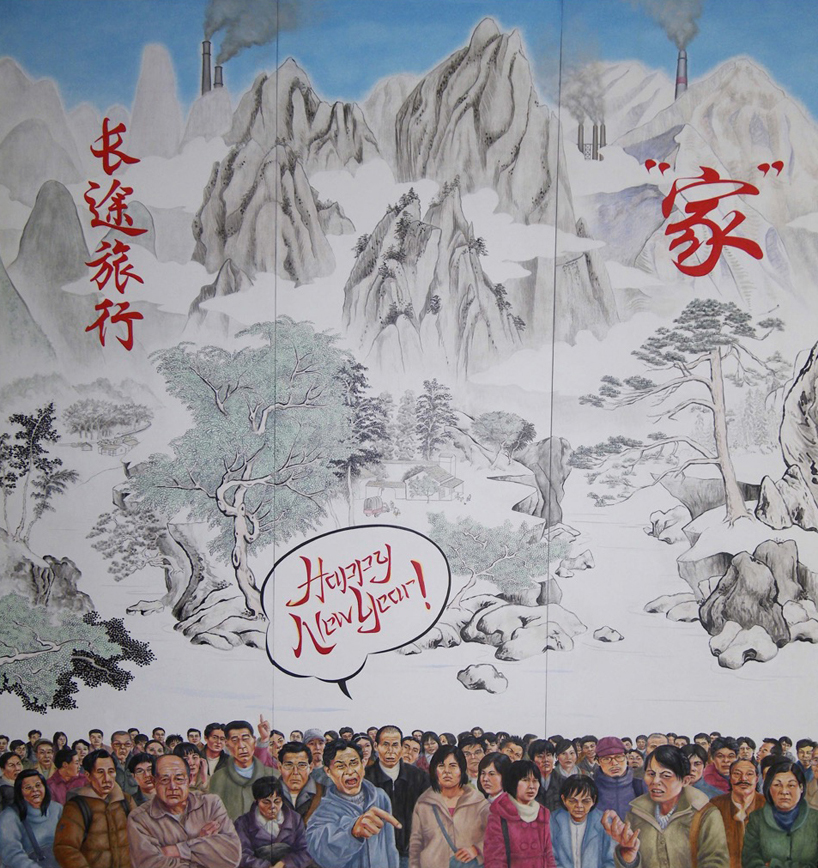
Long Journey Home – Happy New Year! acrylic, oil and paper on board, 54 x 60”, 2012
This painting was inspired by the documentary film, “Last Train Home” by Chinese-Canadian filmmaker Fan Lixin. It is about the annual grueling journeys home to rural areas made by migrant factory workers for the Lunar New Year or Spring Festival. While the film follows a family, I have extrapolated to the general movement. The journey starts in the upper right with clues to the length of the journey coming from the different mountain ranges, reading right to left. The final leg of the journey is in the farm truck, which pulls up to the family home just above the speech bubble.
Frequently these trips take multiple days, involve travel by train, boat, and bus, and could cover over 1900 kilometers. This movement comprises a mind boggling 150 million people, but each and every one of them is an individual. The workers arrive home to find estranged children. This is why these migrant workers do not look happy. “Happy New Year” is therefore ironic. The characters on the left translate, “long journey,” and the one on the right means “home.” The quotation marks show that it is no longer truly home.
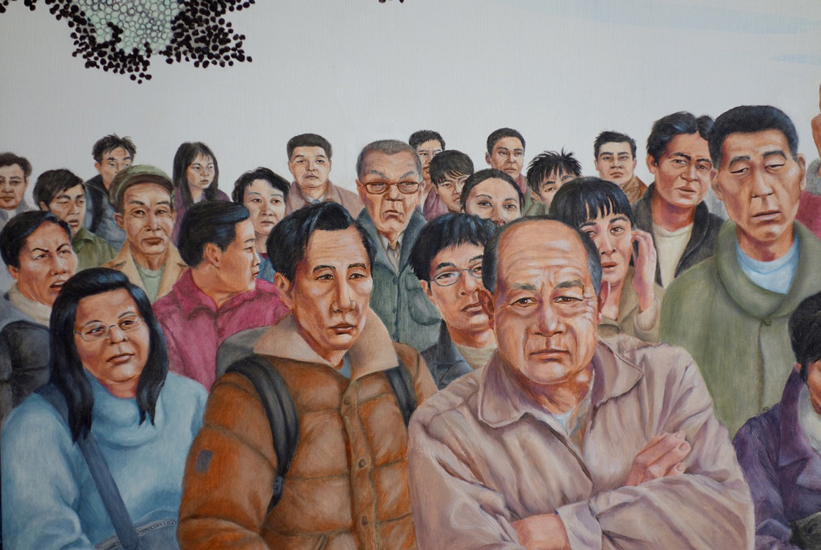
Detail: Long Journey Home – Happy New Year!
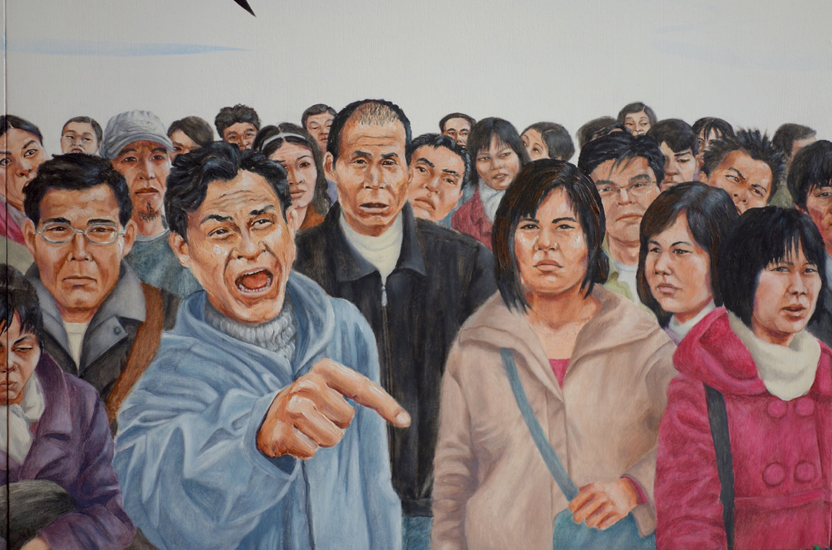
Detail: Long Journey Home – Happy New Year!
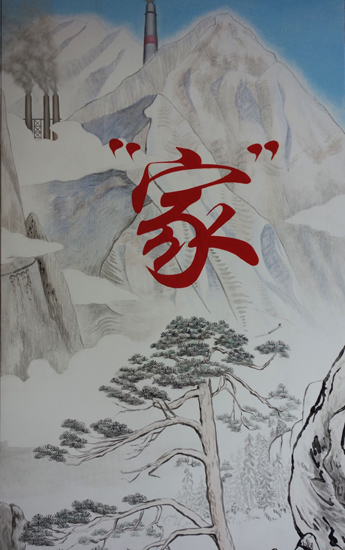
Detail: Long Journey Home – Happy New Year!
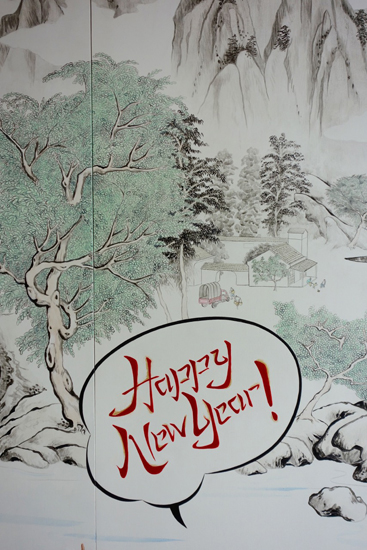
Detail: Long Journey Home – Happy New Year!
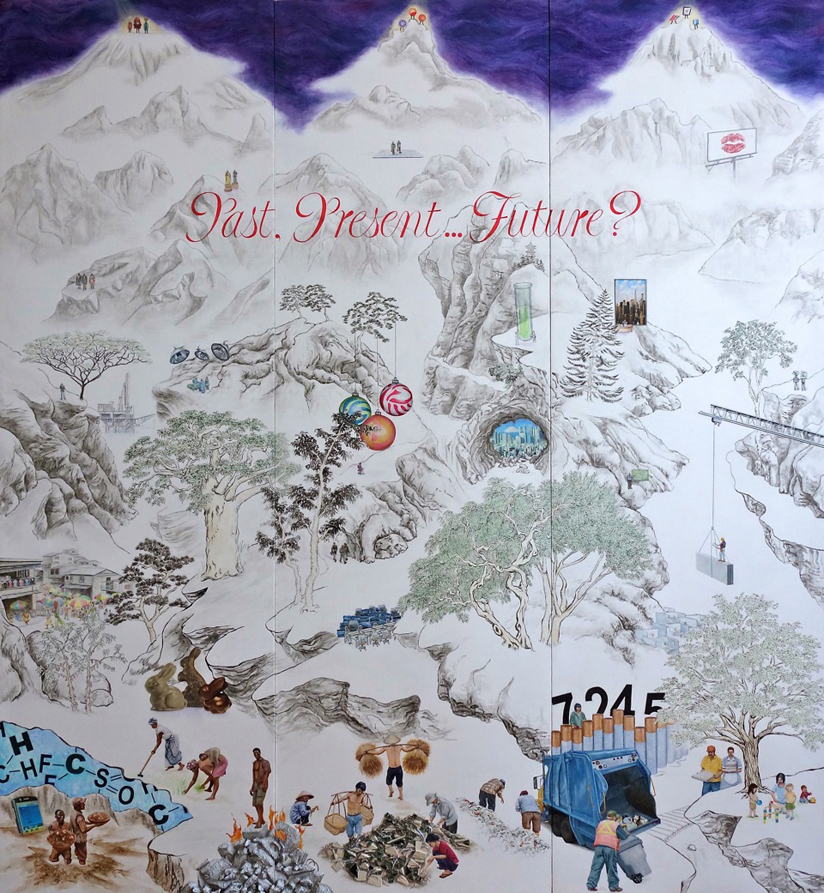
Past, Present…Future? mixed materials on board, 54 x 60”, 2012
Here, the ever-present economic pyramid is the subject, with the hard labour jobs on the bottom. Africa is represented on the left panel, Asia in the middle and the western world on the right. Mountains, trees and jobs are appropriate to each. The tiny figures at the top are not just individuals, but rulers through corporations. The words of the title are superimposed near the top.
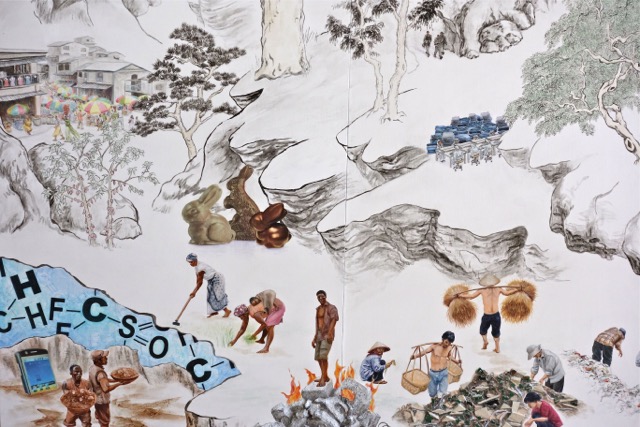
Detail: Past, Present…Future?
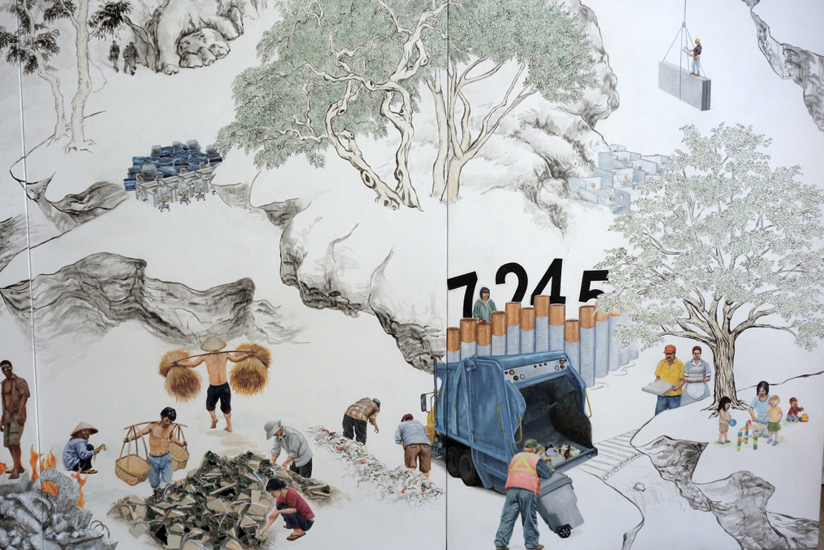
Detail: Past, Present…Future?
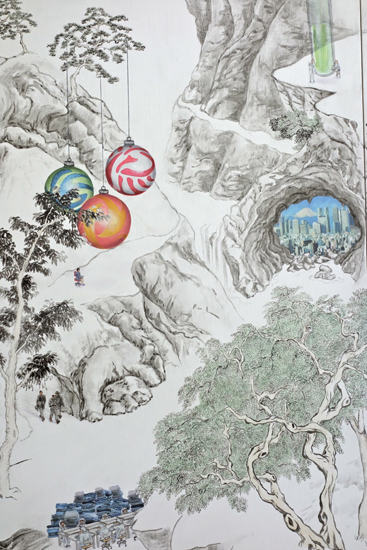
Detail: Past, Present…Future?
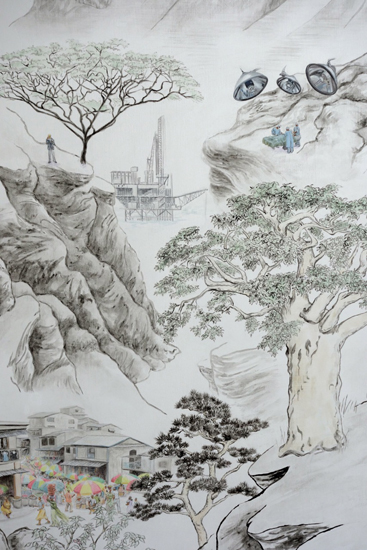
Detail: Past, Present…Future?
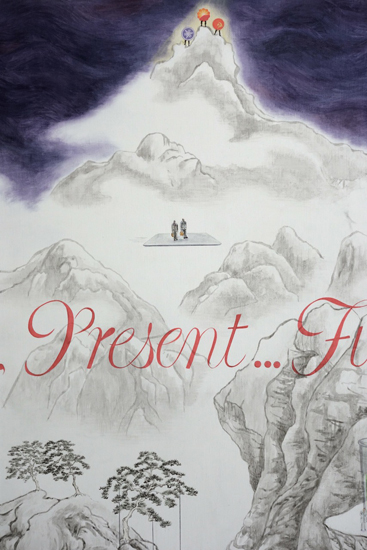
Detail: Past, Present…Future?
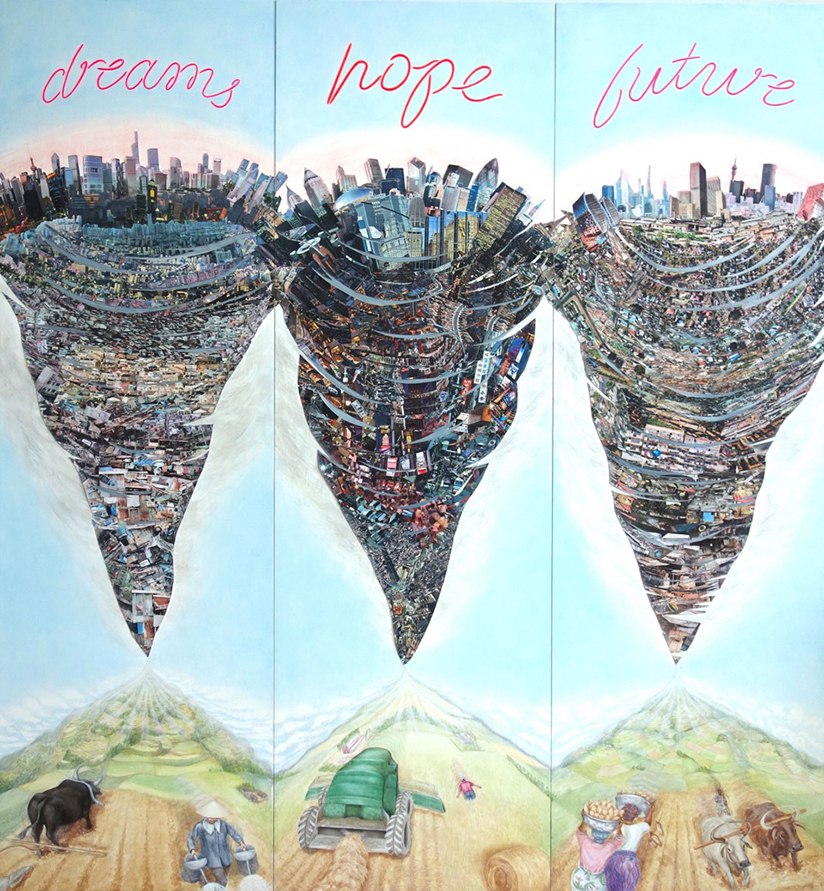
Dreams hope future, mixed materials on board, 54 x 60”, 2013
The words of the title explain why there is a mass migration all around the world from the country to the city. The whirlwinds embody this compelling drive, as people working the land are sucked into urban centers. There, life generally begins in the slums. The hopes and dreams are, of course, to climb the economic ladder to reach the life of privilege represented by the skyscrapers at the top. The geographies and the buildings that make up the whirlwinds are images from the three “worlds” represented.
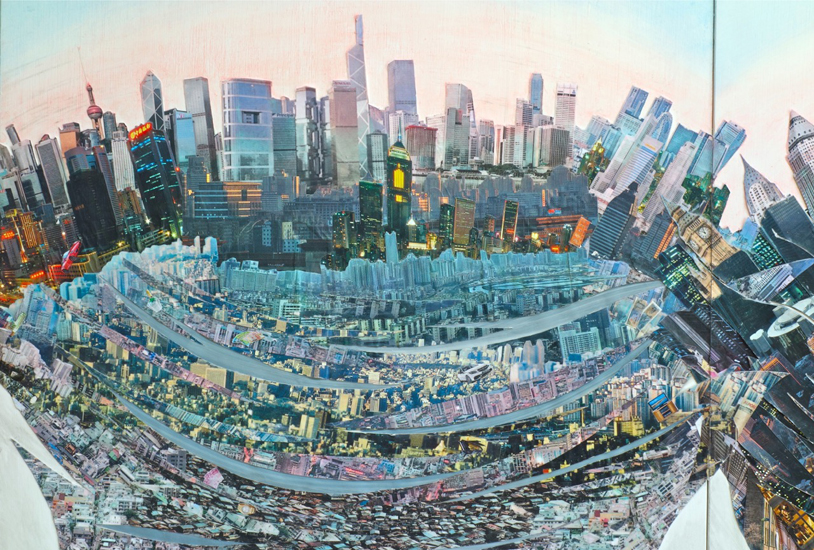
Detail: Dreams hope future
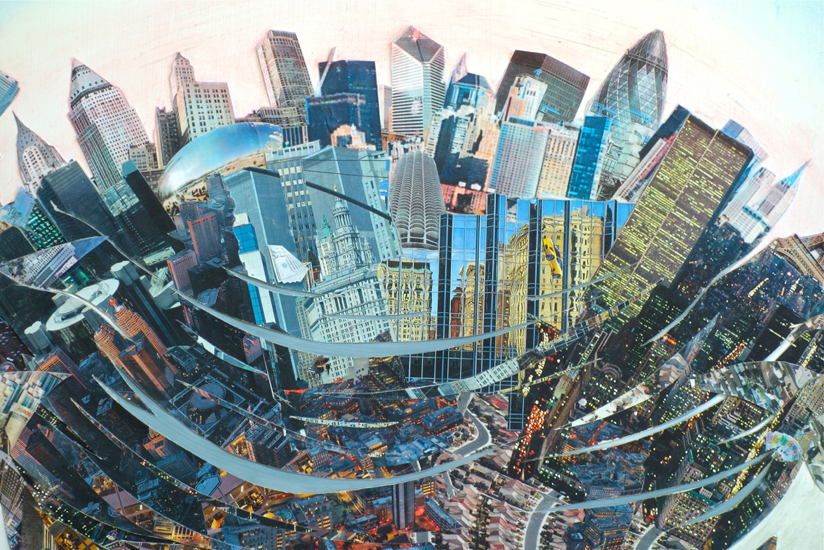
Detail: Dreams hope future
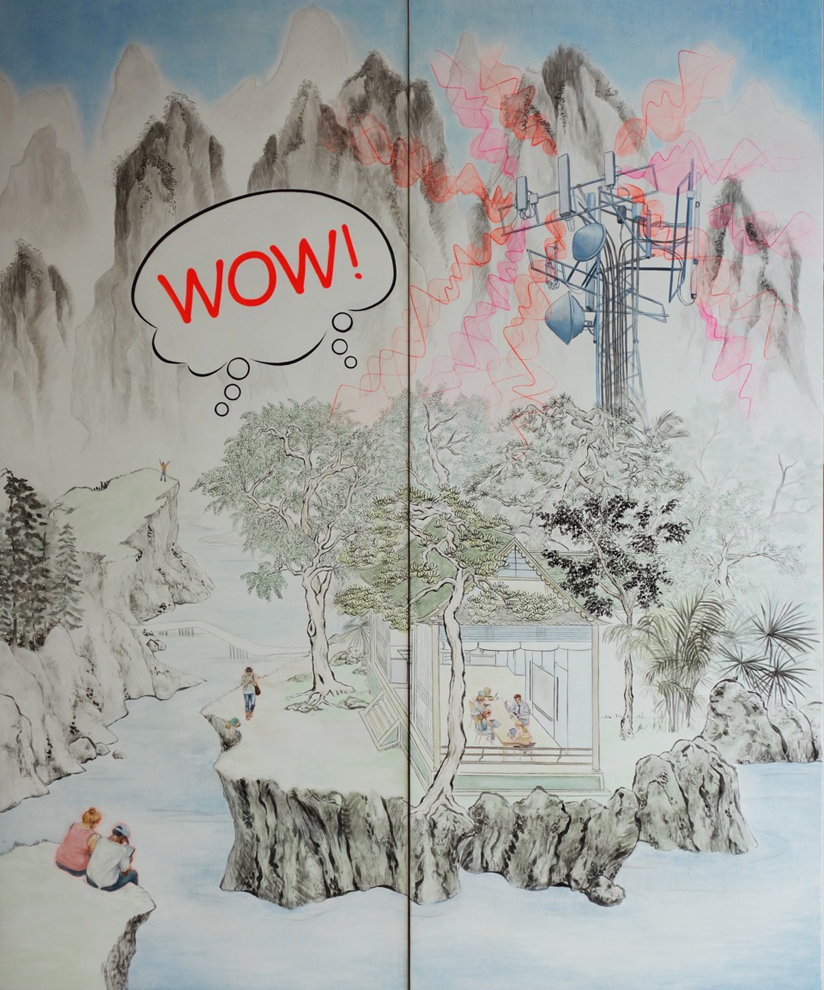
Wow! acrylic and oil on board, 40 x 50”, 2013
The exclamation comes from the viewer of the scenery, but also from the small boy who can’t get attention from his family, who are all preoccupied with their mobile devices. The cell tower bathes all in unseen waves.
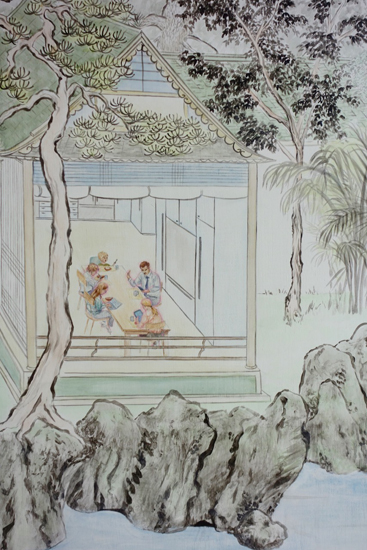
Detail: Past, Present…Future?
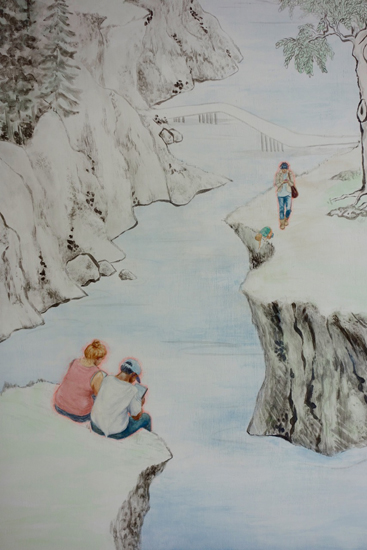
Detail: Past, Present…Future?
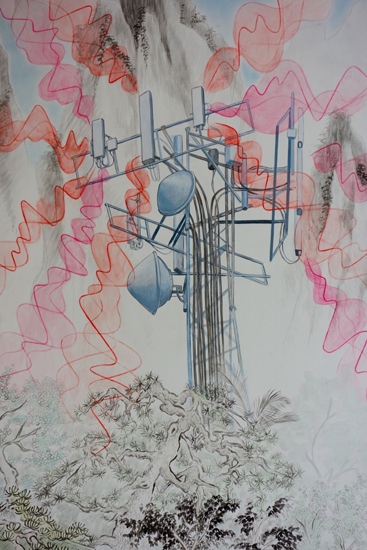
Detail: Past, Present…Future?
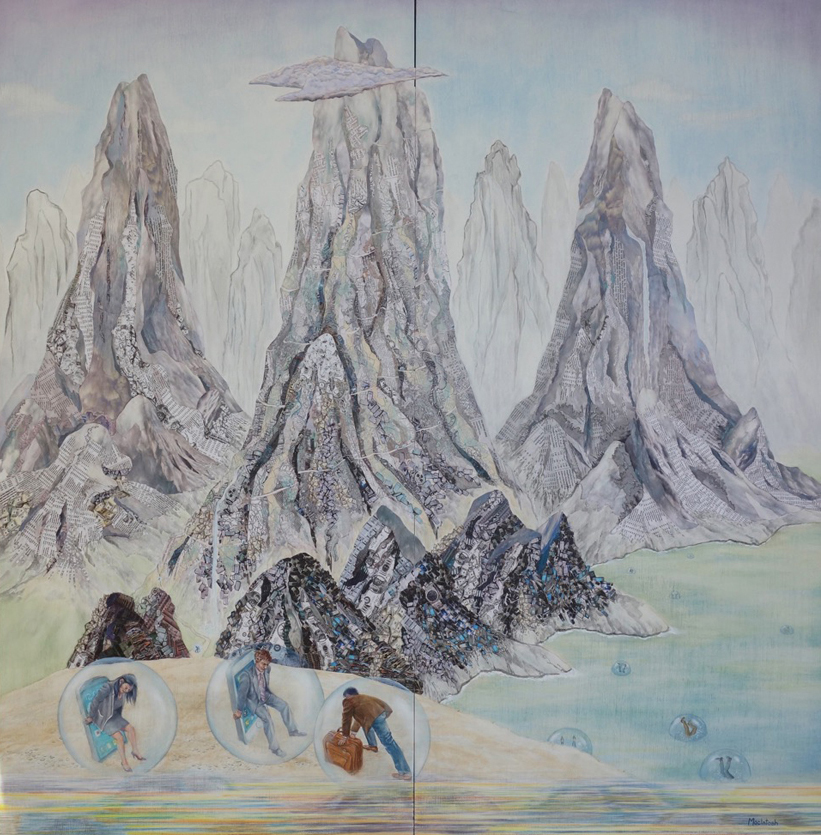
Sisyphean Modern Life, acrylic, oil and paper on board, 40 x 40”, 2016
Modern life seems to be anchored by technology, represented here primarily by cell phones. Money and business, indicated by the various bank notes and stock figure reports, form not only the base of most human endeavors, but also the mountain we strive to climb. Each in our own private bubble, when we strive to climb that mountain to the clouds, like Sisyphus of Greek mythology, we fall, condemned to begin the climb again.
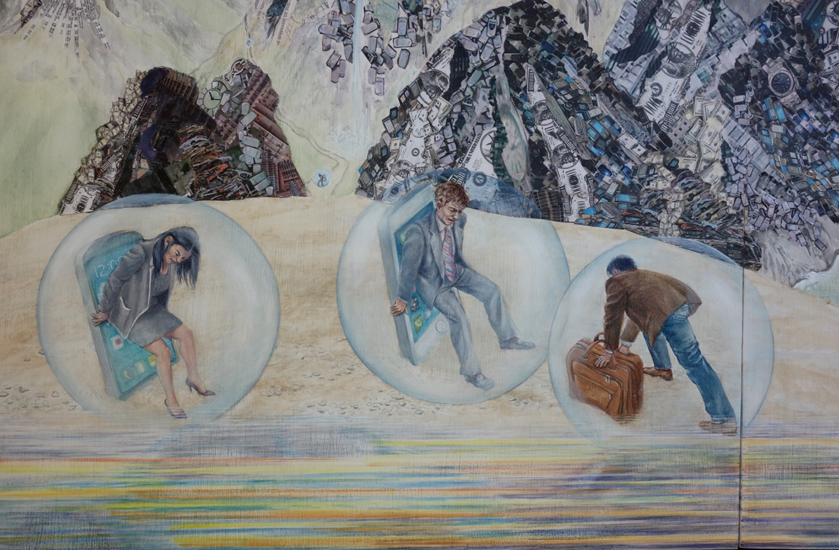
Detail: Sisyphean Modern Life
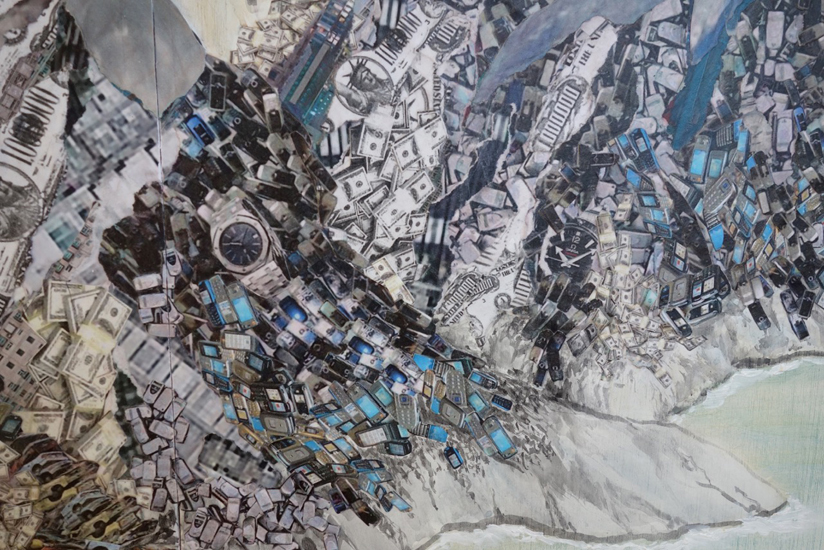
Detail: Sisyphean Modern Life
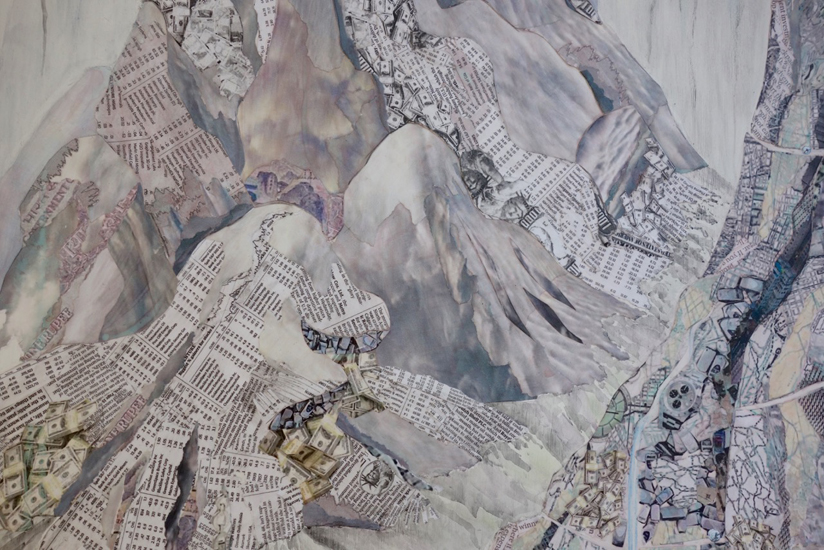
Detail: Sisyphean Modern Life